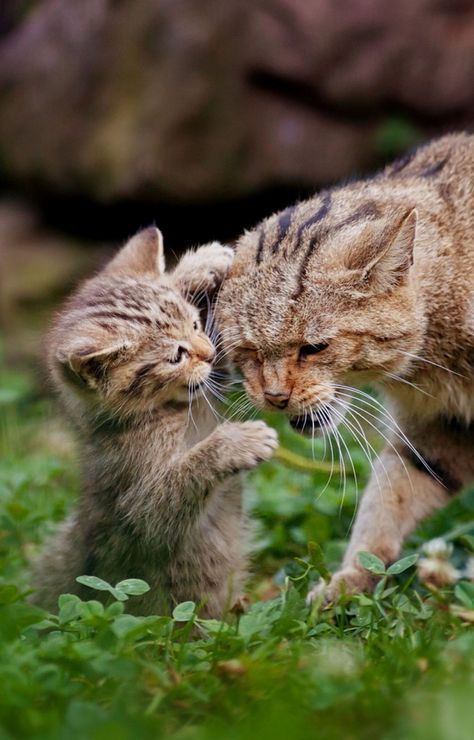
Cats are often seen as solitary and independent creatures, but beneath this exterior lies a world of intricate family dynamics and social interactions. From the majestic big cats roaming the wild to the charming domestic cats curled up in our homes, let’s explore the diverse and captivating world of cat families.
Contents
The Social Lives of Lions
Lions are the epitome of social felines. Living in groups called prides, their social structure is both complex and fascinating. A pride consists of several related females, their offspring, and a small number of males. Female lions, usually sisters, stay in the same pride for life and work together to hunt and raise their young. Male lions, who protect the pride and its territory, may stay with a pride for a few years before being ousted by younger rivals. The cubs, nurtured by all the females in the pride, learn essential survival skills through play and observation.

The Secretive Solitude of Tigers
Tigers, in stark contrast to lions, are solitary animals. Each tiger has its own territory, which it marks and fiercely defends. The only time tigers come together is for mating or when a mother is raising her cubs. Tiger mothers are incredibly devoted, caring for their cubs until they are old enough to fend for themselves, which can take up to two years. During this time, the cubs learn to hunt and navigate their environment, preparing for a life of solitude.
Cheetahs: A Unique Social Structure
Cheetahs have a unique social structure among big cats. While female cheetahs are solitary, raising their cubs alone, male cheetahs often form small groups called coalitions. These coalitions usually consist of brothers who stay together for life, hunting and defending their territory as a team. This cooperative behavior increases their chances of survival and success in the wild.
Leopards: Masters of Stealth and Solitude
Leopards are solitary and elusive, preferring to live and hunt alone. A mother leopard will raise her cubs on her own, teaching them to hunt and survive in a variety of environments. Cubs stay with their mother for about two years before becoming independent. This period is crucial for the cubs to learn the skills necessary to thrive as solitary predators.

Domestic Cats: Complex Social Creatures
Domestic cats, although often seen as aloof, are capable of forming strong social bonds. In multi-cat households, cats can develop hierarchies and social structures, with some cats becoming more dominant and others more submissive. Cats use a variety of vocalizations, body language, and behaviors to communicate with each other and establish their social standing. Mothers are deeply nurturing, teaching their kittens essential skills and grooming them to foster bonds.
The Role of Play in Kitten Development
Play is a vital part of a kitten’s development. Through play, kittens learn to hone their hunting skills, understand social cues, and establish relationships with their littermates. These playful interactions help shape their future behavior and social interactions. Play is not only crucial for physical development but also for mental and emotional well-being.

Conclusion
The social structures and family dynamics of cat species are as diverse as they are fascinating. From the highly social lion prides to the solitary tigers and leopards, each species has adapted its family structure to best suit its environment. Even domestic cats, with their unique blend of independence and sociability, demonstrate the complexity of feline social interactions. By understanding these behaviors, we can better appreciate and care for these extraordinary animals, whether they roam the wild or share our homes.

